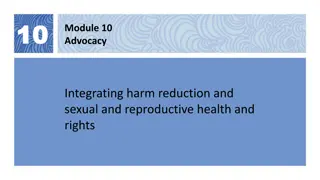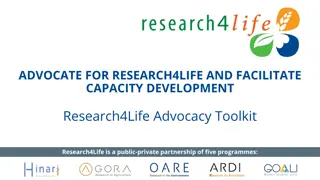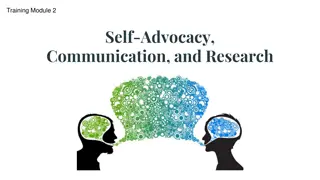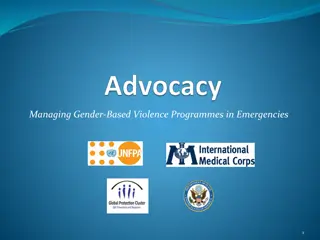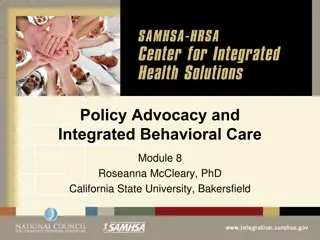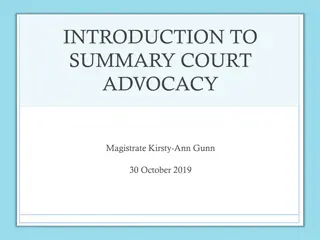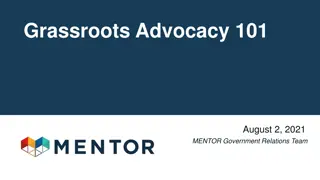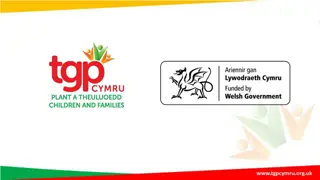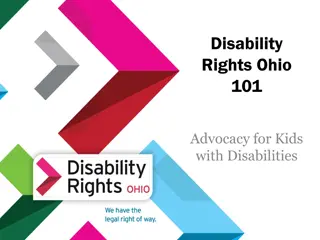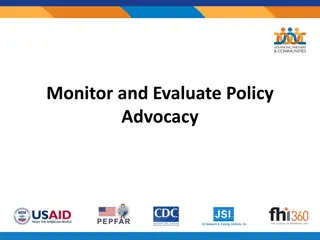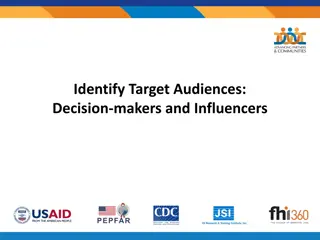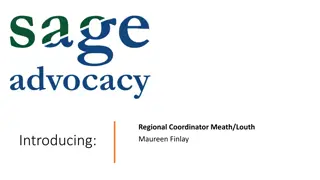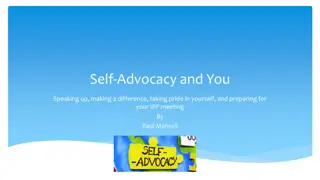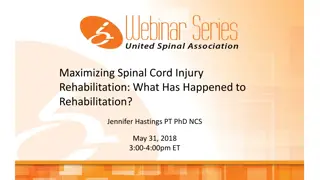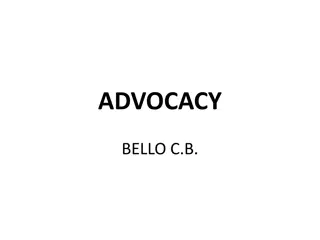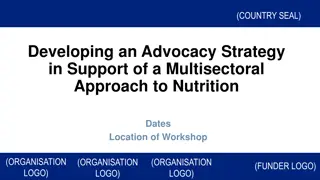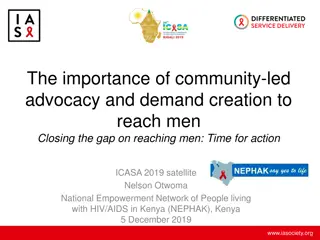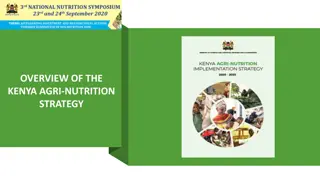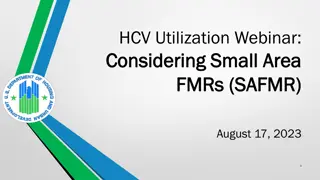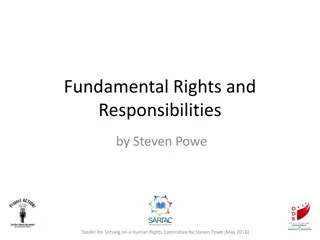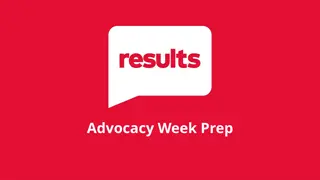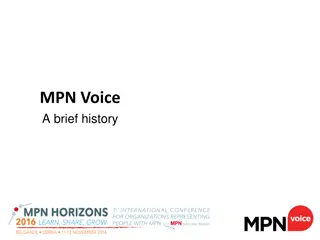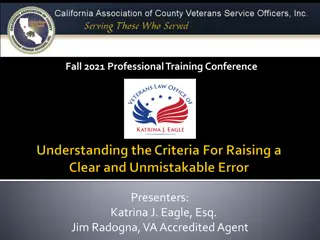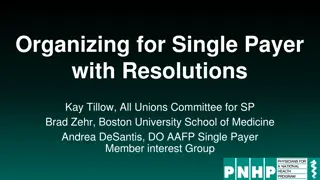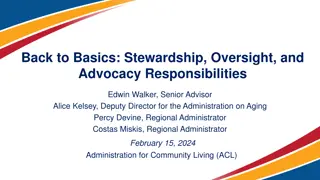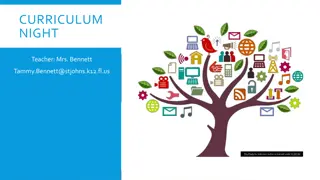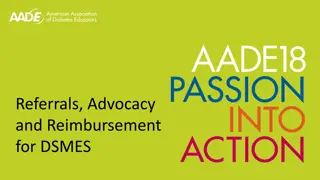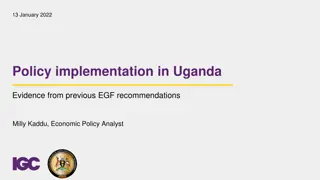Advocacy Essentials: Understanding, Importance, and Implementation
Explore the significance of advocacy in influencing change, learn advocacy strategies and steps, understand the importance of targeting specific allies, and discover how to communicate effectively to create impact.
Download Presentation

Please find below an Image/Link to download the presentation.
The content on the website is provided AS IS for your information and personal use only. It may not be sold, licensed, or shared on other websites without obtaining consent from the author. Download presentation by click this link. If you encounter any issues during the download, it is possible that the publisher has removed the file from their server.
E N D
Presentation Transcript
Objectives of the Session By the end of this session, participants will be able to: Describe advocacy and why it is important List the six advocacy steps Link advocacy plans to our accountability to affected populations Develop and deliver short advocacy messages that are appropriate for varied targets.
What is Advocacy? Speaking up for your rights or the rights of others A process of influencing change (policy, practices, attitudes) A persuasive argument for a specific outcome A strategic communication designed to increase political will. DEFINITION OF NUTRITION CLUSTER ADVOCACY Humanitarian nutrition advocacy is a strategic and evidence-based process aiming to influence policies, practices and behaviours that safeguard and improve the nutrition of individuals affected by emergencies
Why is Advocacy Important? Greater impact Better use of resources Garners support for policy Increases sustainability Creates an enabling environment Gets actors to engage with the sector and creates buy-in for coordination Gets the attention of decision makers
How do we Advocate? In the best interests of the affected population http://www.unocha.org/annualreport/2011/sites/unocha.org.annualreport.2011/files/Back_CIV.jpg?1336066584 Strategically Based on evidence Based on rights With a focus on the interests of the sector and/or Cluster, not our organizations Context specific
Advocacy Toolkit Detailed suggestions and examples of how to develop an advocacy strategy.
Strategic Targets and Allies Who has the direct or indirect power to make the change you seek? Ministers CLA Heads of government departments Cluster partners Other Clusters/ sectors Community representatives Other humanitarian organisations Political and religious leaders Media Donors Military
Communicating Strategically There must be a communications strategy behind the message! How to deliver the message When to deliver it Who to target - many groups or one? What to do next
Advocacy and AAP The voices of affected people can be a very powerful tool to support your advocacy! Consider ways to engage communities in shaping and defining advocacy messages. Also look at ways to collect evidence of people s needs, concerns and priorities to support your advocacy. BUT: Be respectful of affected people s dignity in designing and implementing advocacy efforts
Delivering your message Vitamin and mineral deficiencies affect a 1/3 of the world s people- debilitating minds, bodies and the economic prospects of nations Research shows that iron deficiency in adults is lowering productivity up to 2% of GDP in the worst affected countries For example, the World Bank has said that vitamin and mineral deficiencies impose high economic costs in virtually every developing nation. Fortification, supplementation, education and disease control are the answer. We can address this through our Action Against VMD with your help.
Advocacy Ex: 2 minutes with Back into the case study scenario, select one target and message Advocacy Target Advocacy Message 1. Local Leader To advocate for community acceptance of complaints/feedback mechanism 2. Donor Full funding of one of the cluster s strategic objectives 3. HC Include nutrition interventions in the list of life-saving interventions for CERF 4. CNN Increase global awareness of nutrition needs
Key Messages Always use evidence for your advocacy Have a clear objective and target audience for your advocacy Link advocacy to desired outcomes - improved results and rights for affected people Strengthen advocacy messages with the views and perspectives of affected people themselves Don t forget internal advocacy within the cluster on issues like quality, joint approaches, community engagement, etc.



